Information and Communications Engineering
About Information and Communications Engineering
Studies involve a good balance of both hardware and software related to the various ways to convey information using communications network technologies, electronics, mobile wireless communications technologies, photonics, and information processing technologies (technology related to computers).
Research Domain
information and communication systems, ubiquitous computing, data mining, fuzzy theory, ICT for safe and secure life, wireless ad hoc network, wireless local area network, wireless ubiquitous network, sensor engineering, odor sensor and its application, microwave circuit design, wireless power transmission, electromagnetic wave problems, antenna analysis and design, brain-computer interface, biocybernetics, quality of service in networking, information security, acoustic signal processing, active noise control, mobile computing and networking, disaster communicationResearch
Microwave Devices and Circuits Lab.
TANAKA Shinichi
We focus on developing state-of-the-art microwave function devices utilizing advanced circuit design technology based on metamaterial technology. Metamaterials* can be realized using circuit technology but for electromagnetic waves they behave like smart “materials” with properties that have not yet been found in nature. The new technology has been widely applied to passive microwave components, such as antennas, hybrid couplers and filters. Recently, we have proposed a new design method of metamaterial circuits, leading to high-performance, compact, and even low-cost design of active microwave components such as oscillators, amplifiers and rectifiers. This is crucial for microwave systems because the active components are the key to the overall performance, size and cost of the total system. Our recent achievements includes development of a triple-band rectifier for wireless power transmission or RF-energy harvesting systems [1], a low-phase noise oscillator for X-band radar systems [2], and highly efficient L-band power amplifier for cellular phone applications [3].
References; [1] T. Oka, T. Ogata, K. Saito, and S. Tanaka, Asia Pacific Microwave Conference (APMC), Sendai, 2014. [2] S. Tanaka, H. Nishizawa, K. Takata and K. Saito, IEEE International Microwave Symposium (IMS), Phoenix, 2015. [3] To be published
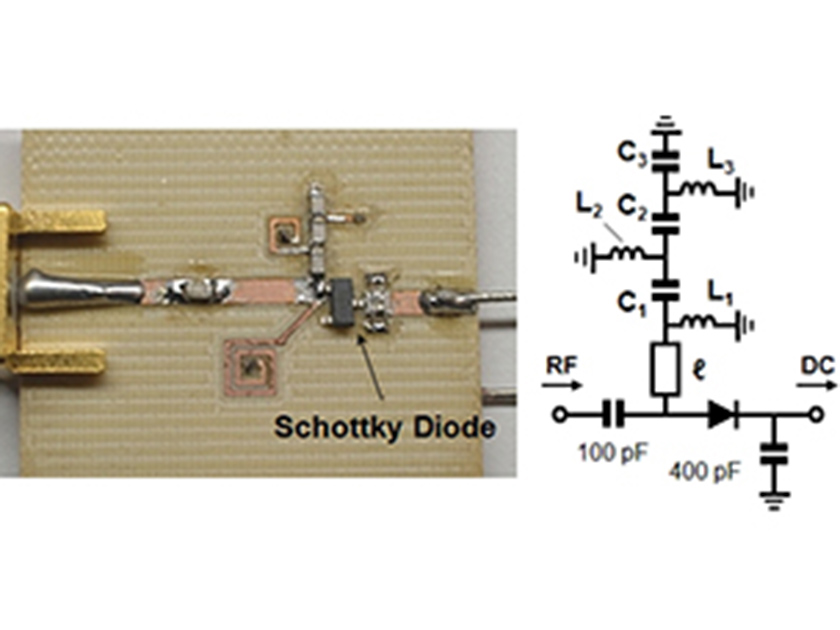 Triple-band rectifier using metamaterial frequency tuner
Triple-band rectifier using metamaterial frequency tuner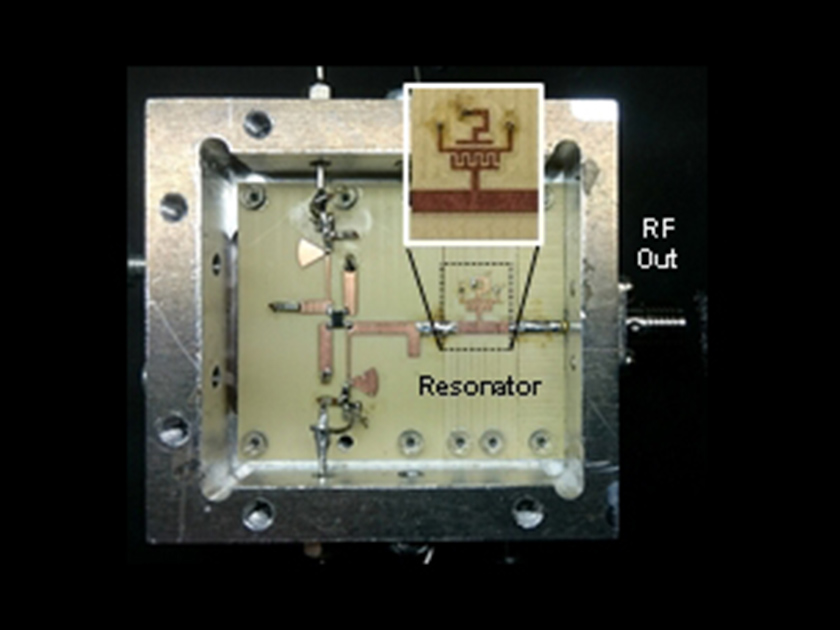 X-band low phase-noise oscillator using metamaterial resonator
X-band low phase-noise oscillator using metamaterial resonator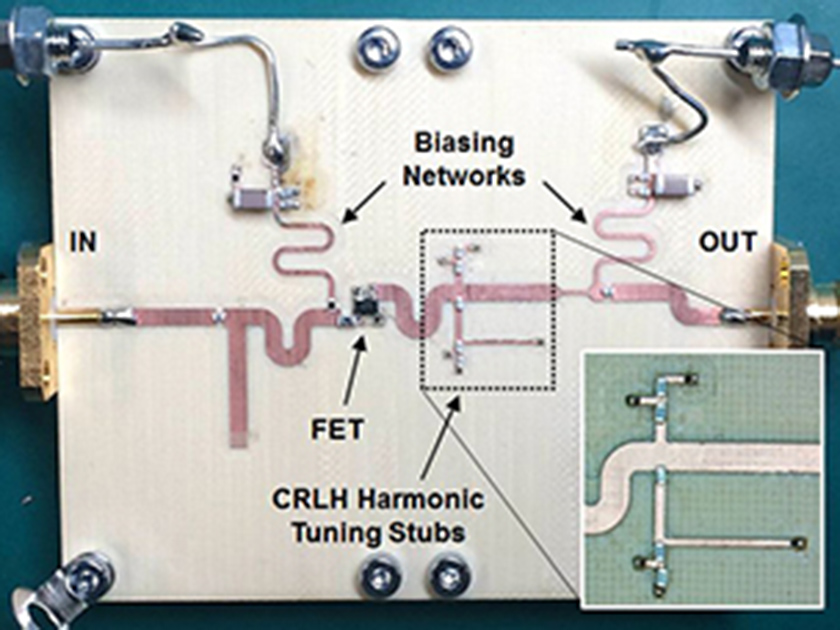 High efficiency amplifier using metamaterial harmonic tuning circuit
High efficiency amplifier using metamaterial harmonic tuning circuitNetworking and sensing through user terminal participation
MORINO Hiroaki
We are interested in designing the next generation mobile network architecture and mobile computing systems. One of topics we are focusing on is realizing collaborative sensor networks by using user terminal participation, in which each user’s mobile terminal obtains live information from the real world by exploiting radio information or a variety of sensors equipped with them, and it uploads them to the server in the Internet to recognize the situation of the specific place. For example, we try to estimate crowd density at some place using users’ mobile phones, by that they obtain the signal strength and packet loss information of public WiFi access points there. We also address mitigating natural congestion that frequently occurs in highway through detecting congestion phenomena and sharing the congestion information by using vehicle ad hoc networks(VANET) and each car adjusts the velocity to reduce the congestion. The last example is assisting disaster relief. We address a method to record evacuation route trajectory of each person in indoor environment without GPS when the Internet is not available after the disaster occurs, by utilizing smartphone sensors such as acceleration sensors, gyro or air pressure sensors.
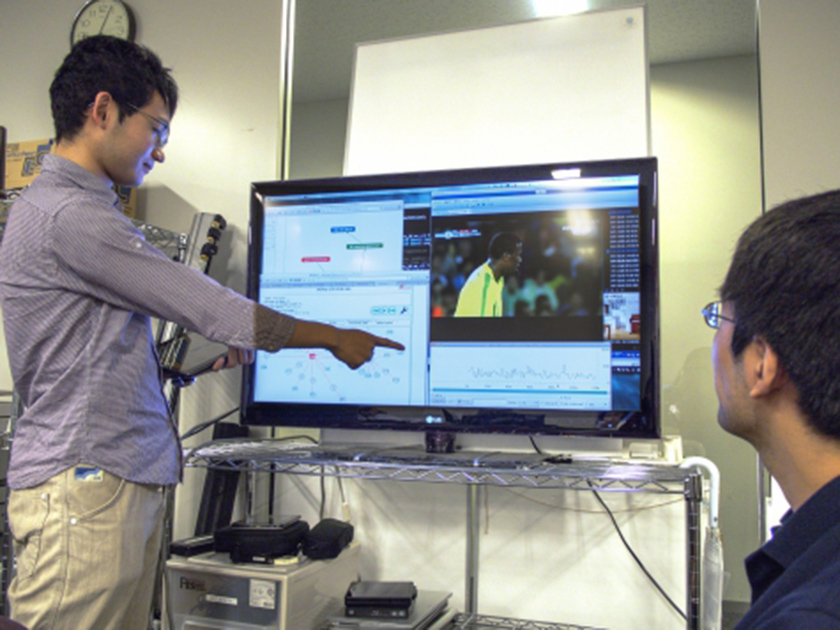
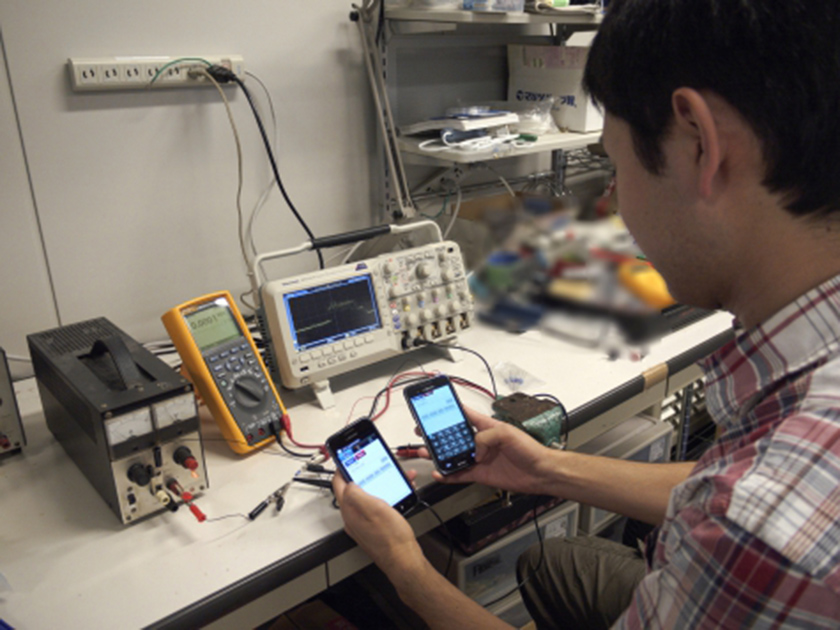
Laboratories
Objectives in Education and Research
The vision of the Department of Information and Communications Engineering is to develop individuals having the following skills: Basic academic intellect related to information and communications engineering and an attitude to pursue the problems facing ones’ field of expertise. 2. Systematic comprehension of the essence of information and communications engineering and thereby able to address any issues arising. 3. Problem-solving methodologies by exploiting multi-objective approaches, the trade-offs, and take into account potential impacts to society.